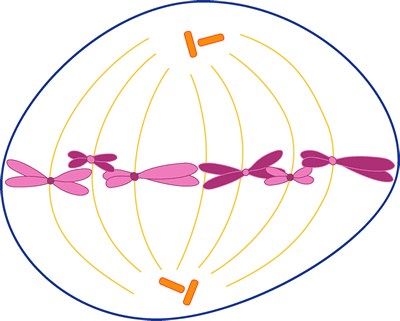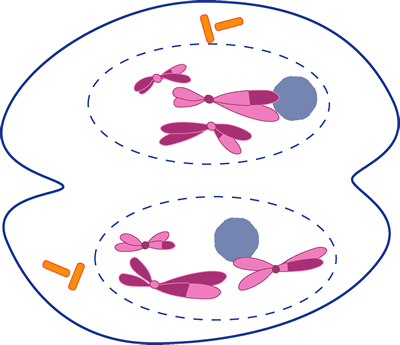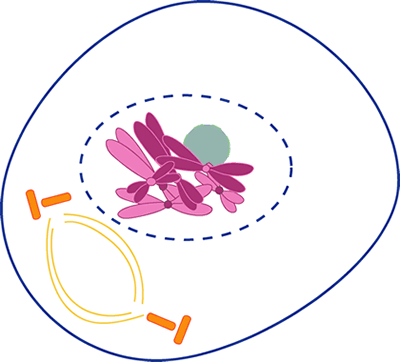Introduction:
1. DNA is unique for everyone. The only exception is if a person has what?
1A. If a person has an identical twin then their DNA is not unique.
2. What are DNA fingerprints used for?
2A. DNA fingerprints are used for many things such as identifying a biological parent, or as evidence in a crime.
Part 1 “It Takes a Lickin”
3. What “crime” was committed?
3A. Jimmy's property had been damaged (his lollipop was eaten).
4. What bodily fluid was removed from the “crime scene” to get DNA?
4A. To eat a lollipop you have to lick which means a trace of the criminal's saliva was left. The saliva is what will be used to create a DNA fingerprint.
Part 2 “DNA Fingerprinting at the NOVA Lab”
5. What does a restriction enzyme do?
5A. A restriction enzyme chops the DNA at different places like a pair of scissors. The location in which the enzyme cuts depends on how the molecule/gene is coded. A certain sequence can make a certain enzyme cut at a certain spot.
6. What is agarose gel?
6A. Agarose is a thick gelatin-like matter that strains molecules, letting smaller DNA particles percolate better than larger ones.
7A. Electrophoresis is the process in which molecules move along an electric current. Since opposite poles attract, the negative DNA bits ar
e pulled towards the positive end of the tray.
8. Smaller fragments of DNA move easier than longer strands.
9. Why do you need to place a nylon membrane over the gel?
9A. You need to place a nylon membrane over gel so you can pick it up easily. It is pretty difficult to pick up the gel by itself, but the nylon membrane, a paper-like substance, will suck up the DNA.
10. Probes attach themselves to DNA fragments (on nylon membrane).
11A. The chemical(s) in the lab that are radioactive are the probes.
12. Sketch your DNA fingerprint.

13. Based on your DNA fingerprint, who licked the lollipop?
13A. The culprit was Honey Sweet.
Click on the Link “DNA Workshop” (if this link won't load, scroll down to the bottom where it says "try the non-java script version)
Once you’re there, go to the link “DNA Workshop Activity” and practice with DNA replication and protein synthesis.
Browse the DNA Workshop site.
14. What kinds of things could you do at the DNA workshop?
14A. I was able to go through the process of replicating DNA and synthesizing protein in which I matched up base pairs, transcribe DNA, match anticodons,
Find an Article about DNA
Go to http://www.thegenesite.com/
15. Read an article about genetics at this site that you might find interesting, or use the "Search" box in the upper right hand corner to search for DNA fingerprinting.
Title of Article
By Hillary Mayell/August 24, 2001DNA Tests Show African Elephants Are Two Species
In the past, elephants have been split into two species: Asian and African. Now, according to a DNA fingerprinting test, the African forest and savanna elephants are two completely different species. Almost as diversified as a lion and tiger. Unfortunately, if this information is correct, then elephants are in even more danger than we previously thought. This theory is based on Different Characteristics and Major Implications. Physically the savanna and forest elephants vary by their overall body, tusk, ear, and skull shape. Socially they differ as well, savanna elephants travel in much larger units than forest elephants. Of course, scientists have been educated on these trait differences for a while. It was found that these variations were not strong enough to back up the theory. That is where DNA comes in, previously these DNA tests were not very accessible, but are now. It is essential that this theory is accepted because it can help specify how to better save the elephants. More specific strategies can now be put into place. For example: logging imposes a major threat to forest elephants, whereas expansion of agriculture is lethal to savanna elephants.
 This is metaphase because the chromosomes are all aligned.
This is metaphase because the chromosomes are all aligned. This stage is Cytokinesis because the daughter cells are being cleaved.
This stage is Cytokinesis because the daughter cells are being cleaved. This stage is Prophase because the mitotic spindles are forming.
This stage is Prophase because the mitotic spindles are forming.